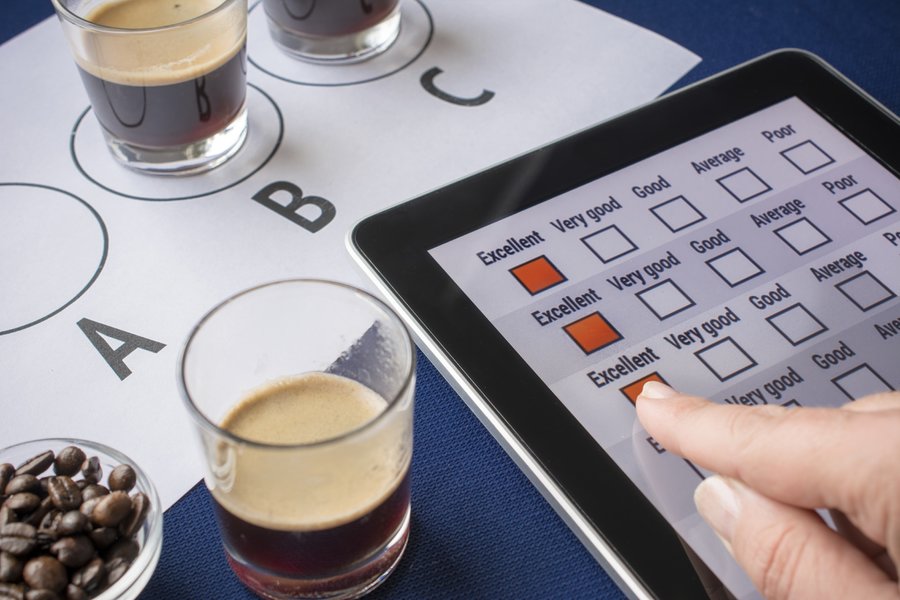ISO 8586 Sensory Panel Selection and Training
The selection and training of a sensory panel is critical to ensure accurate and reliable results in sensory analysis. ISO 8586, "Selection and training of panels for the descriptive analysis of food," provides guidelines on how to select participants who can effectively evaluate food samples based on their organoleptic properties.
Sensory panelists are trained individuals capable of consistently identifying, describing, and categorizing sensory attributes in food products. The selection process involves assessing potential panelists' ability to perceive taste, smell, texture, appearance, and other relevant qualities accurately. Once selected, these panelists undergo rigorous training to enhance their analytical skills and ensure consistency in their evaluations.
Selection criteria include physical characteristics such as age, gender, and general health status; experience with sensory evaluation; and the ability to provide consistent and reliable feedback. Training typically covers topics like tasting protocol, proper use of descriptive language, and understanding of statistical methods used in data analysis.
The selection and training process is not just about identifying capable individuals but also ensuring they maintain a neutral state regarding brand or product bias. This neutrality ensures that the sensory evaluation results are objective and unbiased. Proper training helps panelists develop critical thinking skills necessary for analyzing complex food products effectively.
Organizations implementing ISO 8586 should consider factors such as sample size, diversity of participants, and frequency of training sessions when selecting their sensory panels. Regular updates to the selection process ensure that only qualified individuals continue to participate in evaluations over time.
Sensory panelists play a vital role in ensuring product quality by providing valuable insights into consumer preferences and expectations. By adhering strictly to ISO 8586 standards, organizations can enhance their reputation for delivering high-quality products while maintaining compliance with international regulations.
Organizations involved in food production need reliable sensory data to make informed decisions about product development, formulation adjustments, packaging improvements, and market positioning strategies. Properly trained and selected panels provide accurate information that supports these efforts.
In conclusion, selecting and training a competent sensory panel is essential for maintaining consistent quality across all stages of the food industry lifecycle—from raw material procurement through final consumer acceptance.
Why It Matters
Selecting and training a sensory panel according to ISO 8586 ensures accurate, reliable, and consistent sensory evaluations. Accurate sensory data enables food manufacturers to improve product quality, enhance consumer satisfaction, and comply with international standards.
- Avoids subjective bias in evaluation results
- Consistent performance across multiple evaluators
- Reproducible results for ongoing quality control checks
- Supports regulatory compliance requirements globally
- Promotes accurate communication between stakeholders involved in product development and production processes
- Ensures ethical standards are met when conducting sensory evaluations
- Facilitates better understanding of consumer preferences and expectations
- Aids in making well-informed decisions regarding recipe formulation, packaging design, and marketing strategies
By adhering to ISO 8586 guidelines during the selection and training process, organizations demonstrate their commitment to excellence in sensory evaluation practices. This commitment translates into improved product quality and increased customer trust.
Applied Standards
ISO 8586:2017 is the internationally recognized standard for selecting and training panels for descriptive analysis of food products. It specifies criteria for participant selection, including physical characteristics such as age range (typically between 18-65 years), gender distribution, and general health status.
The document also outlines requirements for experience in sensory evaluation, which can be acquired through formal education or practical experience working within the industry. Additionally, potential panelists must demonstrate an ability to perceive taste, smell, texture, appearance, and other relevant qualities accurately.
Training provided under ISO 8586 focuses on developing critical thinking skills needed for analyzing complex food products effectively. Topics covered include tasting protocols, proper use of descriptive language, and understanding statistical methods used in data analysis.
The standard emphasizes the importance of maintaining a neutral state regarding brand or product bias during evaluations to ensure objectivity. Proper training helps panelists avoid introducing personal preferences into their assessments.
By following ISO 8586 guidelines, organizations can create reliable sensory panels capable of providing accurate and consistent information about food products. This consistency is crucial for ensuring quality control throughout the production process and meeting regulatory requirements globally.
Industry Applications
- Descriptive analysis of new product formulations
- Ongoing quality control checks during manufacturing processes
- Packaging design optimization based on consumer preference data
- Market positioning strategies tailored to specific target audiences
- Development of custom sensory evaluation protocols for unique food products
- Evaluation of supplier consistency in raw material quality
- Identification and resolution of potential issues affecting product safety and efficacy
- Creation of standardized testing procedures for internal use or external certification purposes
Sensory panels play a crucial role in various aspects of the food industry, from research and development to final consumer acceptance. Properly trained and selected panels provide valuable insights that support decision-making processes throughout these stages.





